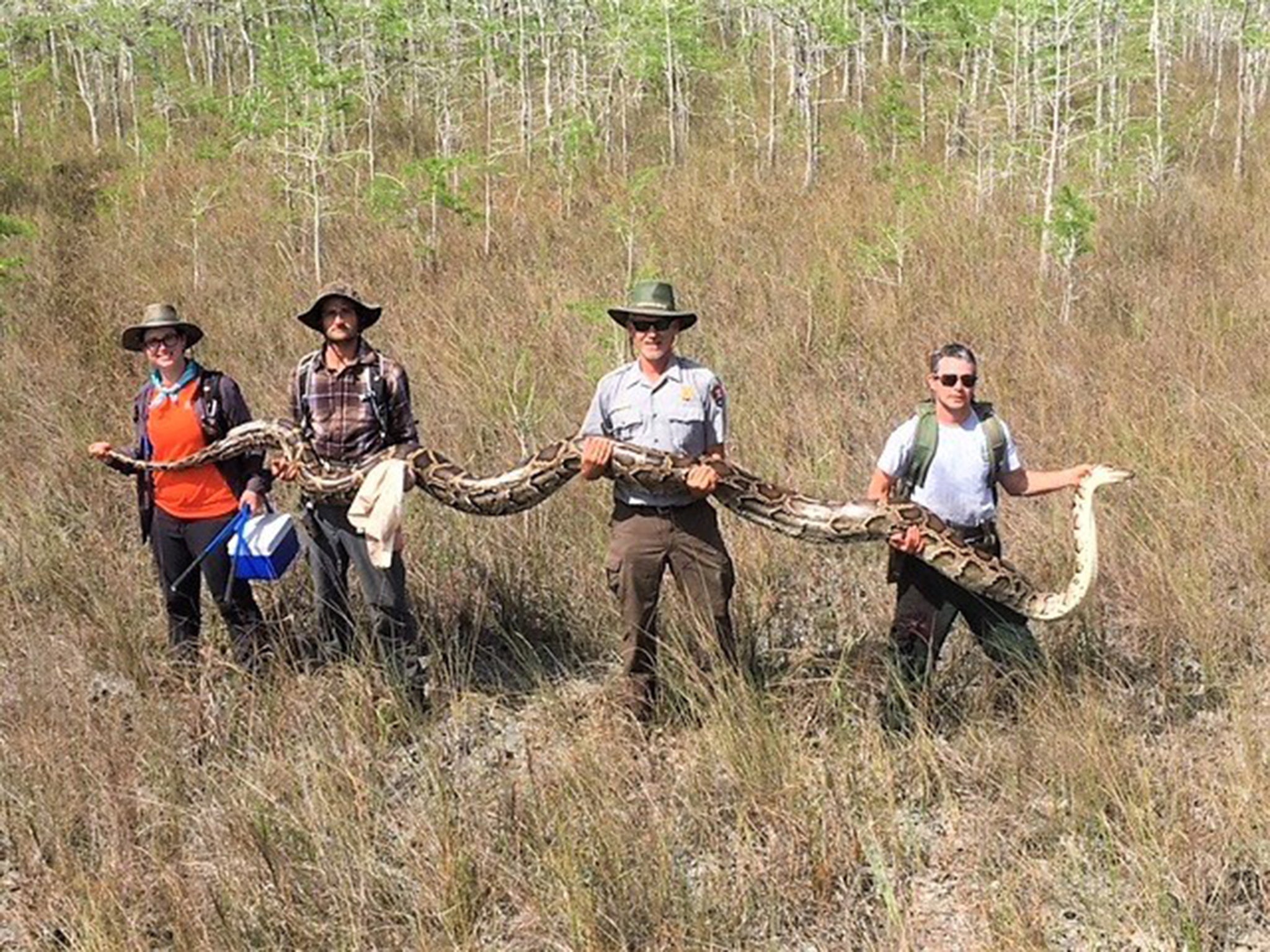Python measuring 17 feet and carrying 73 eggs is largest ever found in Florida
Wildlife officials track male snakes moving towards breeding females in effort to eradicate non-native species

Your support helps us to tell the story
From reproductive rights to climate change to Big Tech, The Independent is on the ground when the story is developing. Whether it's investigating the financials of Elon Musk's pro-Trump PAC or producing our latest documentary, 'The A Word', which shines a light on the American women fighting for reproductive rights, we know how important it is to parse out the facts from the messaging.
At such a critical moment in US history, we need reporters on the ground. Your donation allows us to keep sending journalists to speak to both sides of the story.
The Independent is trusted by Americans across the entire political spectrum. And unlike many other quality news outlets, we choose not to lock Americans out of our reporting and analysis with paywalls. We believe quality journalism should be available to everyone, paid for by those who can afford it.
Your support makes all the difference.A 17-foot female python carrying 73 eggs was captured in the Florida Everglades and is thought to be the largest ever snake to be caught in the nature preserve.
Wildlife officials aiming to eradicate the invasive Burmese python from the wilderness discovered the snake using a new tracking approach that focusses on the laws of attraction.
Male pythons are tagged with radio transmitters, allowing researchers to track the male as it moves towards breeding females.
Burmese pythons caught in Florida are often 6-10 feet long, according to the Florida Fish and Wildlife Conservation Commission (FWC). In their native lands, the snakes commonly reach 18 feet and can exceed 20 feet.
FWC officials said that using radio transmitters was part of a larger, collaborative effort to eradicate the non-native species from South Florida.
“The team not only removes the invasive snakes, but collects data for research, develop new removal tools, and learn how the pythons are using the Preserve,” FWC officials wrote in a statement on Facebook announcing the catch.
Florida has used other methods to manage the python population, including encouraging the humane killing of pythons on private property and at 22 wildlife management areas, including Big Cypress. The state has also sponsored removal programme with prize incentives, such as the Python Pickup Programme and regular public hunts.
The state also encourages the public to share the locations of python sightings to help better track the snakes' location.
The Burmese python is native to Asia and came to inhabit the swampy lands of South Florida after people released pet pythons into the wild, reported CBS News. Burmese pythons were first spotted in the Everglades in the 1980s, and the population grew in the aftermath of Hurricane Andrew in 1992.
The storm, a Category 5, made landfall south of Miami and brought great destruction across South Florida, demolishing buildings that included several exotic-wildlife facilities, CBS News reported.
Since then, the python has disrupted the natural ecosystem of predator and prey in the Everglades, competing with native wildlife for food and contributing to the decline in several mammal species.
A 2012 study showed that since 1997, population growth for raccoons in the Everglades had dropped 99.3% per cent, opossums 98.9 per cent and bobcats 87.5 per cent.
“Marsh rabbits, cottontail rabbits, and foxes effectively disappeared,” according to the US Geological Survey.
Washington Post
Join our commenting forum
Join thought-provoking conversations, follow other Independent readers and see their replies
Comments